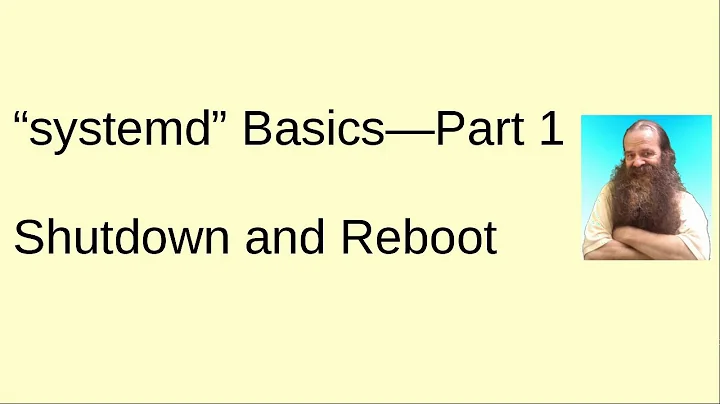How does systemd survive a kill -9?
From man 2 kill:
The only signals that can be sent to process ID 1, the init process, are those for which init has explicitly installed signal handlers. This is done to assure the system is not brought down accidentally.
That is, it is possible for init to do whatever it likes upon receiving SIGKILL (including exiting), but systemd's init does not install any signal handler for it, so nothing happens.
Related videos on Youtube
Gilles 'SO- stop being evil'
Updated on September 18, 2022Comments
-
 Gilles 'SO- stop being evil' over 1 year
Gilles 'SO- stop being evil' over 1 yearBetween the recent "Why does 'kill -9 0' end my console session" and "How to get a kernel panic" questions, I got a bur under my saddle and tried
kill -9 1on a mostly up-to-date Arch linux laptop. I did it as user ID "root".I fully expected some kind of crash or panic or shutdown, but nothing happened. I did
kill -9 1again, to no effect.Arch linux machines run
systemdthese days, so: how doessystemdsurvive a kill -9? I expect there's special case code in the Linux 3.7 kernel, but maybe some other reason exists that I haven't thought of.What about other things that run with PID 1? Slackware still uses
initI believe, but I'm scared to try it on my production Slackware server. DD-WRT on my wireless router runs /sbin/init of some sort. -
 Admin about 11 yearsThanks for noting that. Is this Linux specific? I seem to remember crashing a SunOS workstation back in the early 90s by killing init by mistake. Or not. I was a lot more reckless in my youth.
Admin about 11 yearsThanks for noting that. Is this Linux specific? I seem to remember crashing a SunOS workstation back in the early 90s by killing init by mistake. Or not. I was a lot more reckless in my youth. -
psusi about 11 years@BruceEdiger, I too seem to remember being able to
kill -9initand induce a kernel panic. Sounds like it changed at some point. -
 Admin about 11 years@BruceEdiger - I tried it for an AIX server and an HP-UX one. Both returned an error message: kill: 1: 0403-068 The signal is invalid for this process OR kill: 1: The specified process does not exist. The man page specifically mentioned that this will return an error. I am told by a number of people that this could be done previously - but no one has succeeded in the past 10+ years.
Admin about 11 years@BruceEdiger - I tried it for an AIX server and an HP-UX one. Both returned an error message: kill: 1: 0403-068 The signal is invalid for this process OR kill: 1: The specified process does not exist. The man page specifically mentioned that this will return an error. I am told by a number of people that this could be done previously - but no one has succeeded in the past 10+ years. -
clerksx about 11 years@BruceEdiger It seems from some searching that this is a recent (at least, in terms of Unix lifespan) development. Unfortunately I wasn't alive in the early 90's, so when it happened is out of my scope of knowledge. It would be interesting to find out, though, as it seems that almost all modern Unices have changed to default to this behaviour.




